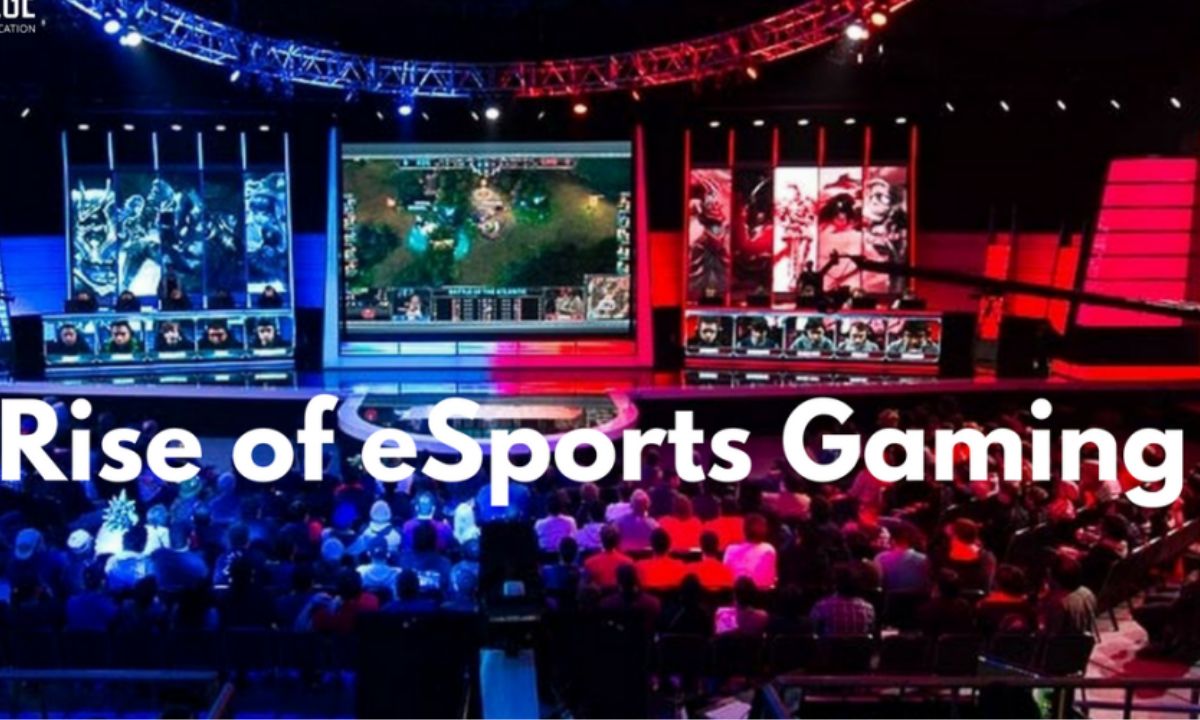eSports has quickly expanded from a niche interest to a global industry, attracting millions of spectators and garnering significant sponsorships. As eSports grows, traditional sports are seeing the inventive involvement, technological use, and diversity that have fuelled its growth.
Traditional sports may remain relevant and appealing to younger, digitally savvy audiences by implementing important eSports concepts. Here’s how traditional sports can benefit from eSports’ success.
1. Improving Digital Accessibility and Engagement
Expanding Global Reach via Streaming
One of eSports‘ major advantages is its accessibility. Games are streamed on platforms such as Twitch and YouTube, allowing anybody with an internet connection to witness live action. Unlike traditional sports, which may have broadcasting restrictions and hefty cable fees, eSports employs open, internet platforms to offer a global audience. Embracing comparable accessibility could help traditional sports reach more followers around the world by breaking down geographic restrictions.
Audience Interaction
In eSports, technologies such as Twitch allow fans to communicate in real-time via conversations and Q&As, resulting in an engaging and community-driven experience. Traditional sports can take this approach by incorporating live discussions, fan surveys, and Q&A sessions during games to increase engagement. Real-time engagement fosters community and loyalty by making fans feel a part of the action.
2. Creating a Connected Fan Community
Community Platforms
eSports fans use platforms like Discord to talk about games, share information, and make relationships. This community-focused approach engages followers outside of tournaments, encouraging loyalty. Traditional sports may increase fan loyalty by developing online places where fans can participate, share material, and connect with their favorite teams or players. Fans can continue to engage with the sport through social media groups, forums, and dedicated applications.
Encourage Fan-Created Content
eSports encourages fan-generated material, including highlights and reaction videos, which increases fan engagement. Using tools such as YouTube video makers, fans can create content about their favorite teams, post it online, and increase the sport’s visibility. Traditional sports might benefit from a similar strategy, encouraging supporters to create highlight reels, analysis videos, or live reactions, resulting in a stronger, more involved fan base.
3. Utilising Technology for Immersive Experiences
Real-time Data Integration
eSports incorporates data into broadcasts, providing real-time metrics and player insights to improve the viewing experience. This open access to data helps fans understand and appreciate the game. Traditional sports can incorporate real-time data displays, allowing fans to follow player numbers, scores, and analytics during a game. This method makes the experience more engaging and gives fans useful information.
Virtual and augmented reality
eSports has also pioneered the use of virtual and augmented reality to improve fan experiences. Some events include virtual seats, allowing supporters to feel like they are in the arena. Traditional sports can use VR and AR to provide immersive viewing experiences, such as watching a basketball game from home or checking player stats on the screen. Such innovation appeals to younger viewers, making conventional sports more interesting and immersive.
4. Increasing Revenue Streams
Digital Purchases and Merchandise
eSports generate money from in-game transactions, virtual products, and online retail. Traditional sports, which continue to rely largely on ticket sales and TV rights, can draw inspiration from these digital revenue sources. Offering virtual experiences, in-game things, or exclusive online merchandise gives fans new avenues to support their favorite teams, expanding revenue streams.
New sponsorship models
The versatility of eSports sponsorships has attracted marketers from a variety of industries, with a focus on millennial and Generation Z audiences. Traditional sports can form relationships outside of their typical industries, extending their appeal. Traditional sports teams can broaden their reach and create a more modern image by attracting businesses that appeal to younger viewers.
5. Promoting Inclusivity and Diversity
Lowering Entry Barriers
One of the main draws of eSports is their inclusion. Unlike traditional sports, which may require specialized physical attributes or access to facilities, eSports welcomes participants from all backgrounds and physical abilities. This inclusivity has attracted a varied set of players and fans, fostering a strong feeling of community.
Traditional sports can benefit from this by developing more accessible programs and emphasizing youth leagues, co-ed teams, and measures that encourage widespread involvement. Embracing diversity and encouraging inclusivity can help conventional sports reach a larger audience and build a supportive, inclusive fan base.
Mental Health Awareness
eSports organizations prioritize mental health, recognizing the stress of competition, and giving services to help participants. Traditional sports are beginning to recognize the value of mental health, and prioritizing it may increase their attractiveness to supporters. By actively supporting mental health initiatives, sports organizations may demonstrate to fans that they care about athletes as individuals, fostering trust and a positive image.
6. Keeping up with Digital Trends and Creating Content
Appeals to Youth Preferences
eSports’ success can be attributed in part to its grasp of Gen Z and millennial habits, such as the desire for digital involvement, social media presence, and an engaging viewing experience. Traditional sports must stay up to these tastes by providing interactive content that is accessible on mobile platforms. Understanding youth trends enables sports organizations to connect with younger audiences that seek real, technologically advanced experiences.
Embracing Content Creation
eSports players and teams utilize social media extensively to create brands and communicate with followers. Many players also post behind-the-scenes content, giving fans an inside insight into their lives and personalities. Traditional sports athletes and organizations can use platforms such as TikTok and YouTube to create content that connects with fans and keeps them engaged all year.
For example, by learning how to be a content creator, conventional sportsmen can reach out to younger audiences and even inspire followers to create their own material. Personalizing material brings fans closer to their favorite players and teams, increasing loyalty and engagement beyond the game.
Conclusion
The rise of eSports demonstrates how traditional sports may benefit immensely from adopting digital accessibility, community building, technological advancements, and diversity. Traditional sports organizations can adjust these techniques to meet shifting audience expectations, fostering fan loyalty and involvement in both in-person and digital environments. As eSports evolves, its impact on traditional sports will only increase, providing a pattern for new, inventive sports entertainment.
Traditional sports can gain a lot from eSports’ innovative approach, whether it’s about developing virtual experiences, increasing money through digital things, or prioritizing fan contact. The competitive gaming industry demonstrates that innovation, diversity, and adaptation are critical to success in today’s digital age.

Hayyat is a talented content writer and digital marketer with expertise in SEO, social media management, and online marketing. She excels at creating impactful, data-driven content to help businesses connect with their target audience and achieve measurable outcomes.





